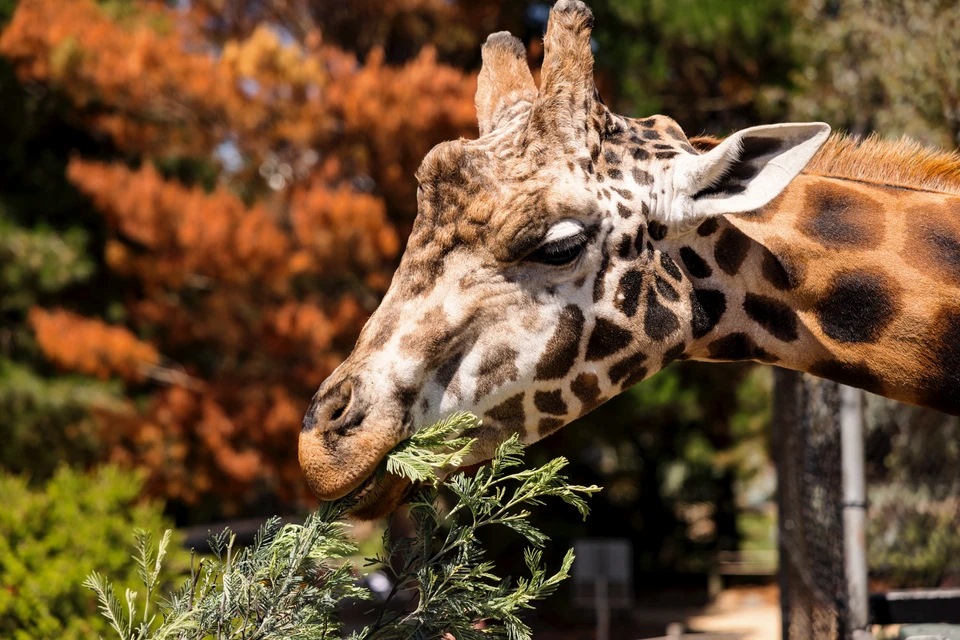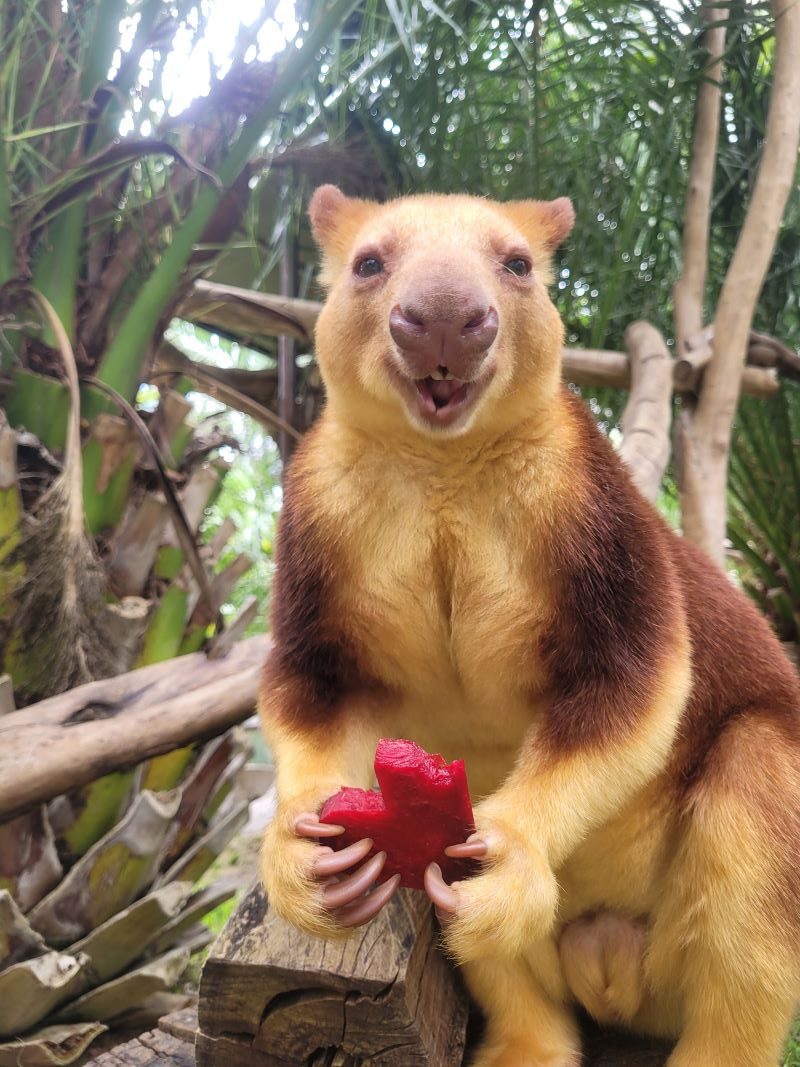Lovers and hopeful romantics around the world celebrate the power of Cupid’s bow today and the residents at the National Zoo and Aquarium are doing the same.
To celebrate the day of love, couples and singles around the facility were given Valentine-themed enrichment activities, from heart-shaped fruit to wrapped presents.
The Zoo also used the day as an opportunity to highlight the importance of the breeding programs they participate in. The zoological facility has a strong commitment to conservation goals and participates in numerous active and nonactive programs that help maintain genetic diversity amongst species.
“Most of those species are managed as a communal population between Australia and New Zealand and that means we wait for recommendations to breed certain animals and certain times,” Sophie Dentrinos, Wildlife supervisor.
A number of animals in the programs are vulnerable, like the small-clawed otters which have welcomed a litter of three babies, or endangered, like the red pandas which have delivered at least four cubs over the years.
“Having these insurance populations in zoos across the world is a really important part of conserving these animals, making sure we have got those insurance populations should we need them in the wild. Some of those programs have even been able to rerelease animals into the wild from captive populations,” says Ms Dentrinos.

Successful love match Mzungu and Shaba have welcomed five giraffe babies since 2015 and with a gestation period of 14 months, it’s safe to say this pair is infatuated with each other. Ms Dentrinos says their coupling has been a highlight of their breeding programs.
“You’re waiting quite a long time to get those calves on the ground and our giraffe pair have bred five offspring so far and have done a really good job getting those out into the rest of the population with some daughters in other cities now that are hopefully going to be breeding in the next couple of years.”
Pairings are based on the recommendation of breeding program coordinators, Ms Dentrinos is the zebra program coordinator. Over the past 20 years, NZA has welcomed 26 zebra calves. Current stud Tambo has recently fathered two cubs Kamandi and Ndefu with mates Johari and Kiva.
“I have 126 zebras and decide who should breed with whom or who should transfer to a certain zoo to breed with another pair over there. We look at that annually, make those recommendations and talk to zoos and make sure it is achievable and the best outcome for both individuals and the program.”



Senior carnivore keeper Katie Ness is particularly proud that the zoo was able to successfully breed Sri Lankan Leopards, the first zoo in Australia to do so. After a long break from breeding lions, they have a hopeful couple in tawny lions Nairibi and Mlinzi.
“They’d never met each other before they came here and we did have to interactions to safely get them together. Big cats can be quite rough because they’ve got claws, teeth, they’re very strong animals. We’re very careful about introductions and over time they start to bond with each other,” she says.
Ms Ness says some animals are easier to breed than others, for instance with the meerkats the challenge is in getting them to stop breeding. Whereas big cats can be a bit trickier, one of their matches for the Sumatran tiger breeding program had to be moved on as they weren’t a good match.
“Mlinzi our lion, they tried to breed him elsewhere, he didn’t like their females, so he was sent here and paired up with Nairibi and he does get along well with her. Some of it just good luck whether they breed and some of it just happens naturally.”
Happy animals are more likely to breed says Ms Ness, the keeper’s role is to ensure the breeding pair have positive interactions and a stimulating life with plenty of food. The moment seeing a new baby being born or meeting them for the first time is an incredible experience for the keepers.
“I remember when we breed our first Sri Lankan leopard litter here, our boys were born on Christmas Eve and we were watching it on camera and we were just so excited,” she says.
Is it love or a lack of mating options? Ms Ness says that the animals do feel genuine affection for each other. Although it may not be obvious to a regular on-looker, there are certain gestures different species do to show their feelings.
“With the lions you’ll see it with things like mutual grooming, they’ll do head rubbing, they’ll just basically rub up against each other, sleeping together with lions as well, roaring is actually a way of strengthening their bonds.”
They are confident in the matchmaking between Mlinzi and Nairibi. Ms Ness says their perfect Valentine’s would be one they spend together.
“Maybe they would share a meal, a little bit of snuggling up in their enclosure somewhere, maybe grooming each other and do a bit of singing by roaring at the end of the day,” she smiles.
Visit the loved-up cuties at the National Zoo and Aquarium 7 days a week; nationalzoo.com.au
Canberra Daily is keen to hear from you about a story idea in the Canberra and surrounding region. Click here to submit a news tip.


